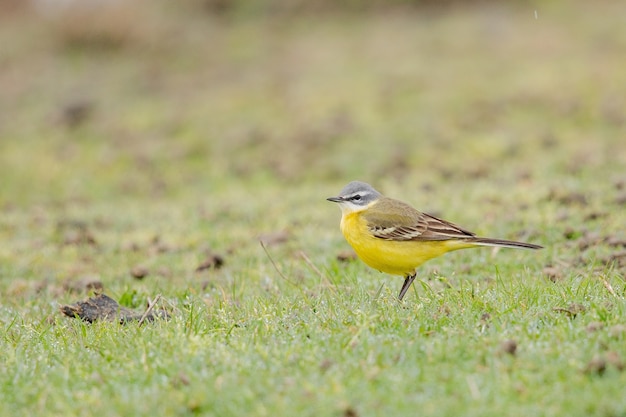Table of Contents
ToggleIntroduction
Alabama, known for its rich biodiversity, is home to various avian wonders. Small yellow birds stand out among the diverse bird species with their vibrant plumage and cheerful melodies. In this article, we’ll delve into the fascinating world of these tiny yellow wonders, exploring their identification, species diversity, habitats, ecological roles, and much more.
Identification of Small Yellow Birds
When strolling through the Alabama wilderness, you might see small yellow birds that capture your attention. These birds are characterized by their striking yellow feathers, varying in shades from pale lemon to deep gold. Their small size and energetic flights make them a delightful sight for birdwatchers.
Species of Small Yellow Birds in Alabama
Alabama hosts a variety of small yellow bird species, each with unique characteristics. The Yellow Warbler, American Goldfinch, and Yellow-Breasted Chat are prominent members of this avian community. Let’s explore these species and their distinguishing features.
Yellow Warbler
Known for its bright yellow plumage and sweet, musical calls, the Yellow Warbler is common in Alabama’s woodlands and marshes. With a preference for dense vegetation, these birds are often found near water sources.
American Goldfinch
The American Goldfinch, with its striking yellow and black colouration, is a year-round resident in Alabama. These tiny birds are often spotted in open fields and gardens, making them a favourite among enthusiasts.
Yellow-Breasted Chat
Distinctive for its yellow throat and melodic songs, the Yellow-Breasted Chat is a summer visitor to Alabama. These birds thrive in thickets and shrubby areas, adding a touch of colour and music to the state’s landscapes.
Habitats and Behavior
Small yellow birds in Alabama exhibit diverse habitats and behaviours. From wooded areas to open fields, these birds adapt to various environments. Nesting habits vary, with some preferring trees and others selecting low shrubs. Observing their feeding and mating behaviors provides insight into their role in the ecosystem.
Importance in Ecosystem
Beyond their aesthetic appeal, small yellow birds play crucial roles in Alabama’s ecosystems. They contribute to insect control, aid in pollination, and serve as indicators of environmental health. Understanding their ecological significance enhances our appreciation for these charming creatures.
Challenges and Threats
Despite their resilience, small yellow birds face challenges in the changing environment. Factors like habitat loss, climate change, and pesticide use threaten their populations. Recognizing and addressing these issues is vital for their survival.
Conservation Efforts
To safeguard small yellow bird populations, conservation initiatives are underway. Habitat restoration projects, public awareness campaigns, and research efforts aim to ensure a sustainable future for these avian treasures.
Birdwatching Tips
For those eager to catch a glimpse of tiny yellow birds in Alabama, strategic birdwatching is critical. Early mornings and late afternoons are optimal, and locations near water sources or open fields increase the chances of spotting these feathered beauties.
Cultural Significance
Small yellow birds hold cultural significance in various societies. Symbolizing joy, happiness, and freedom, they often appear in folklore and art, meaningfully connecting humans to the natural world.
Photography Opportunities
Capturing the vivid colours of tiny yellow birds provides rewarding photography opportunities. Patience, a good camera, and knowledge of their habitats enhance the chances of getting stunning shots.
Small Yellow Birds as Pets
While petting a small yellow bird might be tempting, ethical considerations must be weighed. Understanding these birds’ needs and natural behaviors is crucial before deciding to keep them as companions.
Interesting Facts
- The Yellow Warbler is known for its long migration journey, covering thousands of miles.
- American Goldfinches change their plumage with the seasons, transitioning from bright yellow to more subdued tones in winter.
- Yellow-Breasted Chats are skilled mimics, incorporating various sounds into their songs.
DIY Bird Feeding
Attracting small yellow birds to your backyard can be a rewarding experience. Providing a mix of seeds, water, and suitable vegetation creates an inviting space for these charming visitors.
Future Outlook
As Alabama’s landscape evolves, the future of small yellow bird populations is subject to change. Continued conservation efforts and public awareness are essential for preserving their habitats and ensuring their well-being.
Conclusion
Small yellow birds add vibrant hues and cheerful melodies to the tapestry of Alabama’s biodiversity. Understanding their significance, challenges, and conservation needs allows us to appreciate and protect these delightful creatures. Whether you’re a seasoned birder or a casual observer, the small yellow birds of Alabama invite you to join in celebrating nature’s wonders.
FAQs
- Can I attract small yellow birds to my backyard?
Absolutely! Providing a mix of seeds, water, and suitable vegetation creates an inviting space for these charming visitors.
- Are small yellow birds good for the environment?
Yes, they play crucial roles in insect control pollination and serve as indicators of environmental health.
- What is the best time to spot small yellow birds in Alabama?
Early mornings and late afternoons are optimal times for birdwatching.
- Do small yellow birds make good pets?
While tempting, ethical considerations must be weighed before keeping them as pets.
- How can I contribute to the conservation of tiny yellow birds?
Supporting habitat restoration projects, spreading awareness, and participating in research efforts are effective ways to contribute.





